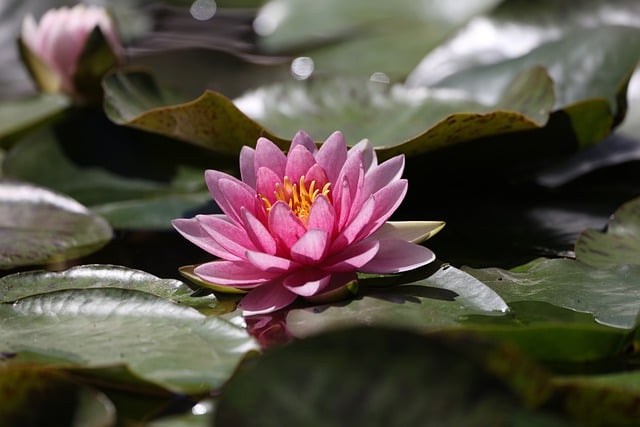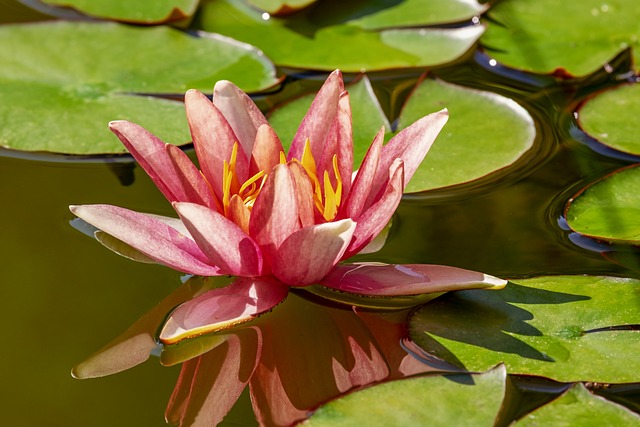Embracing the Flow: Mindfulness Lessons from Water
The concept of mindfulness has gained significant attention in recent years, touching the lives of countless individuals seeking peace, clarity, and a deeper understanding of themselves and the world around them. While many of us are familiar with traditional forms of mindfulness practice—such as meditation, yoga, or deep breathing—it can be illuminating to look beyond these common practices and find inspiration in the natural world. One of the most profound and symbolic elements of nature that embodies the principles of mindfulness is water. Throughout this article, we will explore the myriad lessons that water teaches us, encouraging readers to embrace the flow of life.
Understanding Mindfulness
To grasp the lessons from water fully, we must first understand what mindfulness represents. Mindfulness is the practice of being present in the moment, acknowledging one’s thoughts and feelings without judgment, and fostering a heightened awareness of our surroundings. It involves tuning into our hearts and minds, letting go of distractions, and embracing our experiences as they come. Water, in its various forms—flowing rivers, tranquil lakes, and crashing waves—offers a perfect metaphor for this journey toward mindfulness.
The Fluid Nature of Life
Water’s ability to adapt and flow represents the fluid nature of life itself. Like water, our lives are filled with changes, obstacles, and unexpected turns. Embracing the flow involves accepting these changes and learning to navigate them with grace rather than resistance. Imagine standing by a rushing river, watching as the water smoothly glides over rocks and bends, finding its way even in seemingly challenging terrains. In the same way, we can learn to approach life’s obstacles with a forward motion, understanding that resisting change often leads to greater suffering.
This acceptance of change is a fundamental aspect of mindfulness. When we become aware of our own resistance—whether it’s to a difficult situation, an emotional upheaval, or a necessary life transition—we can begin to loosen our grip. By mirroring water’s adaptability, we can foster a deeper sense of peace and harmony in our lives.
Mindfulness and Presence
One of the most striking characteristics of water is its ability to bring us into the present moment. When we engage with water—be it through the simple act of drinking it, taking a shower, or swimming—we often experience a connection that grounds us. The gentle sensation of water against our skin, the sound of waves lapping at the shore, and the coolness of a stream can all serve as reminders to pause and appreciate the here and now.
Practicing being present can be a valuable tool in cultivating mindfulness. Engaging in simple activities involving water, such as sitting by a lake or engaging in Hydrotherapy, can center our minds and provide clarity. By focusing our attention on the sensations of water, we can tune out distractions and worries, grounding ourselves in the moment and allowing our minds to settle.
Letting Go of Control
Water also teaches us an essential mindfulness lesson: the importance of letting go. When we observe a river, we notice how it flows without striving for control. It takes the path of least resistance, gracefully moving around obstacles rather than trying to push through them. In our lives, we often grapple with the need to control situations, outcomes, and even our emotions. However, just like water, we can find wisdom in surrendering to the natural ebb and flow of our experiences.
Letting go of control does not equate to passivity; rather, it’s about allowing life to unfold, embracing uncertainty, and trusting in the process. Through mindfulness, we can recognize when our desire for control intensifies our stress and anxiety, and actively practice releasing those attachments. Just as water effortlessly alters its course, we can learn to adapt and respond to life’s surprises with a sense of calmness and resilience.
Emotional Resilience
Water’s continual movement is also reflective of emotional resilience. When faced with adversity, water does not simply stagnate. Instead, it flows and transforms, embodying the sun’s warmth as it turns into vapor and finds its way through the clouds, only to fall again as rain. This cycle demonstrates the ability to rise above challenges, endure hardships, and find renewal through each experience.
In our lives, we face emotional highs and lows. Mindfulness allows us to acknowledge and process our feelings without becoming overwhelmed. By observing our emotions as if they were water flowing through us—recognizing that they come and go—we cultivate resilience. Rather than becoming trapped in our feelings, we learn to embrace them as temporary, flowing experiences that contribute to our greater journey.
Finding Calm in Turbulence
Water has an incredible capacity for calmness, even amidst turbulence. A stormy ocean may appear chaotic on the surface, yet beneath the waves, there is a stillness that prevails. This teaches us that even when we are faced with chaos—be it external circumstances or internal turmoil—there exists a deeper layer of calm that we can access through mindfulness practice.
Dedicating time to mindfulness exercises can cultivate this inner tranquility. Whether it’s through meditation, deep breathing, or simply sitting in silence near a body of water, we can tap into this calm space within ourselves. By focusing on the breath and providing ourselves the opportunity to disconnect from the noise of life, we can find peace regardless of external circumstances.
Connection with Nature
Water also connects us to the natural world. This connection fosters an appreciation for the beauty and interdependence of all life forms. In a world where technology often separates us from nature, engaging with water can remind us of our roots and the importance of ecological balance. Observing how water nourishes plants, sustains animals, and creates diverse ecosystems can deepen our understanding of our role within the larger web of life.
By immersing ourselves in nature—whether by hiking near a stream, wading in a lake, or listening to rain patter against the glass—we can tap into the serene energy of the natural world. These moments serve as a powerful reminder of our unity with nature and encourage us to care for our environment with mindfulness and gratitude.
The Gift of Reflection
Finally, water embodies the gift of reflection. A calm lake mirrors the world around it, revealing beautiful images and offering a chance for introspection. In our lives, taking time for self-reflection is vital for growth and understanding. Just as water reflects what is around it, we must cultivate the ability to reflect on our actions, relationships, and feelings.
Mindfulness practices such as journaling or contemplative walks by the water can help facilitate this process. By allowing ourselves to pause, observe our thoughts and feelings, and discern patterns in our lives, we can gain valuable insights into who we are and the direction we wish to take. Embracing self-reflection enables us to learn from our past while remaining present for the present and the opportunities for growth it presents.
Conclusion: Flowing Forward
As we contemplate the lessons learned from water, we uncover pathways to a more mindful existence. By embracing the flow of life, we find acceptance in change, cultivate presence, relinquish the need for control, and navigate our emotions with resilience. Water invites us to find clarity, tranquility, and connection, ultimately guiding us toward a deeper understanding of ourselves and the world we inhabit.
Incorporating these mindfulness lessons into our daily lives can lead to enhanced well-being and a greater appreciation for the beautiful ebb and flow of existence. As we forge ahead on our journey, let us take inspiration from water, allowing it to teach us to embrace life with open hearts and a curious spirit.



